Breast cancer is a condition that emerges when
the cells in the breast
develop
out of control. Breast cancer comes in a variety of forms. The types of breast
cells involved determine the sort of cancer that can occur.
Any area of the breast might become the site of breast cancer. Lobules, ducts,
and connective tissue make up the breast's three primary structural components.
The lobules, which are essentially glands, create the milk. Through tubes known
as ducts, the milk is delivered to the nipple. The connective tissues, often known
as the fatty and fibrous tissues, encircle and hold everything together. The most
common areas to develop cancer are the ducts or lobules.
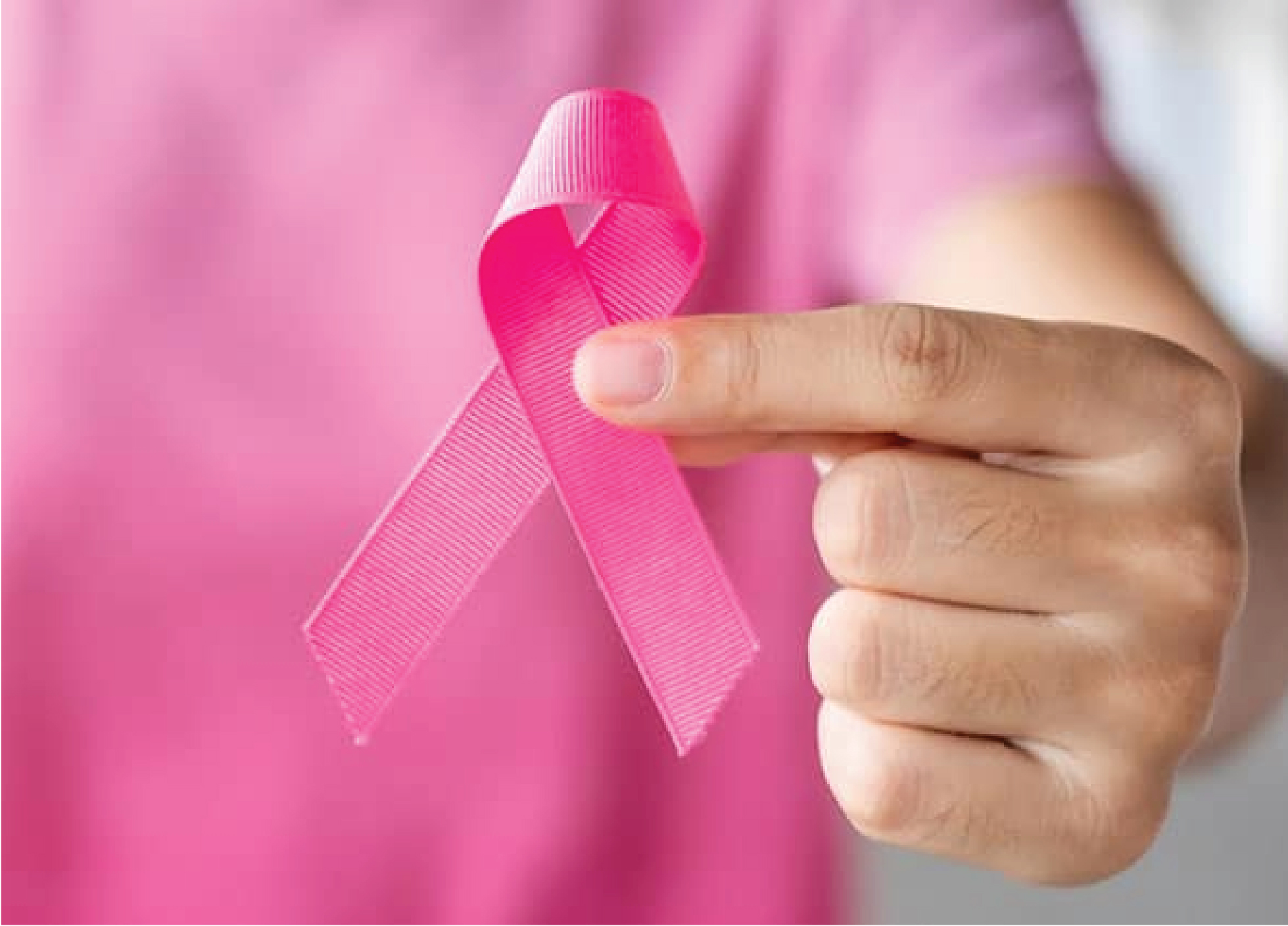
Through blood vessels and lymph vessels, breast cancer can potentially spread
to other bodily areas. It is referred to as metastasis when it spreads.

Invasive Ductal Carcinoma: With invasive ductal carcinoma, the cancerous growth first appears in the ducts before spreading to other areas of the breast tissue. Because of their invasive nature, these cells have the potential to spread or metastasis to other bodily regions.
Invasive Ductal Carcinoma: With invasive ductal carcinoma, the cancerous growth first appears in the ducts before spreading to other areas of the breast tissue. Because of their invasive nature, these cells have the potential to spread or metastasis to other bodily regions.
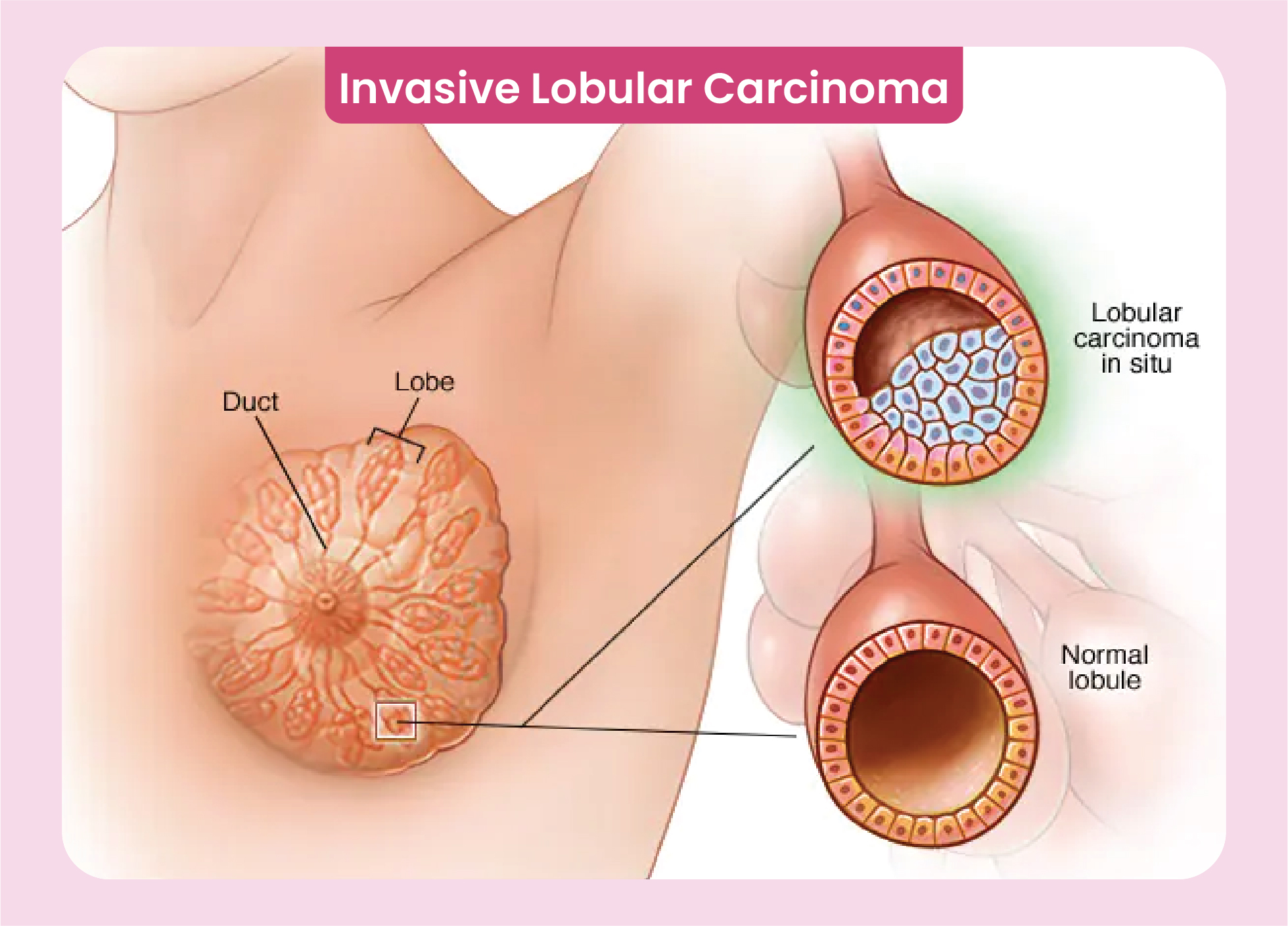
Not all breast lumps are cancer.
It is well recognized that each person's body reacts differently to different symptoms, and that no two people will ever exhibit the exact same
symptoms for the same ailment. Certain individuals completely lack any signs or symptoms.
However, the following is the list of symptoms frequently seen in patients:

Difficulty or pain when swallowing.
New lump growth in the breast or underarm.
Dimpling or irritation of the breast skin.
Changes to the breast's size and form.
Any breast region may experience pain.
Blood and other nipple discharge in addition to breast milk.
Food Sticking in esophagus.
Inward pulling of the nipple or pain in the nipple area However, other breast diseases can also display similar signs and symptoms.
Get in touch with Dr. Nita Nair, the Best Breast Cancer Surgeon in Mumbai,
if you suffer any of the above-mentioned signs and symptoms.
A self-breast exam can be beneficial for periodically checking for breast anomalies.
Changes in the breast can occur for a number of causes, including breast cancer. Self-breast examination,
doesn’t diagnose breast cancer but allows a woman to identify changes in her breast and seek medical help to evaluate the change.
The following are many methods for conducting a breast self-examination:
You must sit or stand in front of a mirror without a shirt or bra, with your arms at your sides, and do the following actions to have your breasts visually inspected:
Look for any puckering, dimpling, or alterations in size, shape, or symmetry.
Put your hands on your hips and check your breasts to see if the nipples are inverted.
Examine your breast by raising your arms above your head, putting both palms together.
Lift your breasts and look to see if the ridges near the bottom are symmetrical.
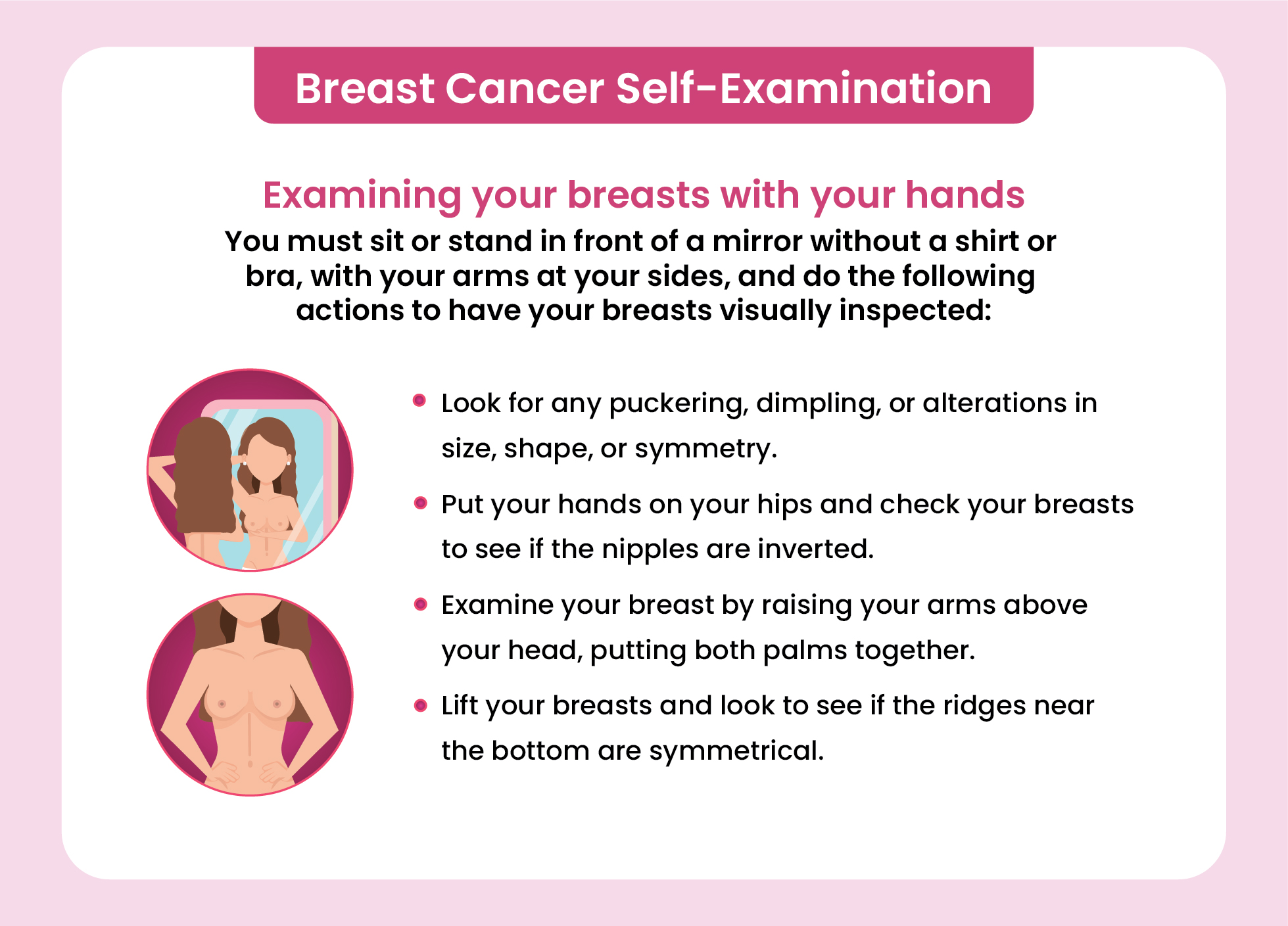
You must sit or stand in front of a mirror without a shirt or bra, with your arms at your sides, and do the following actions to have your breasts visually inspected:
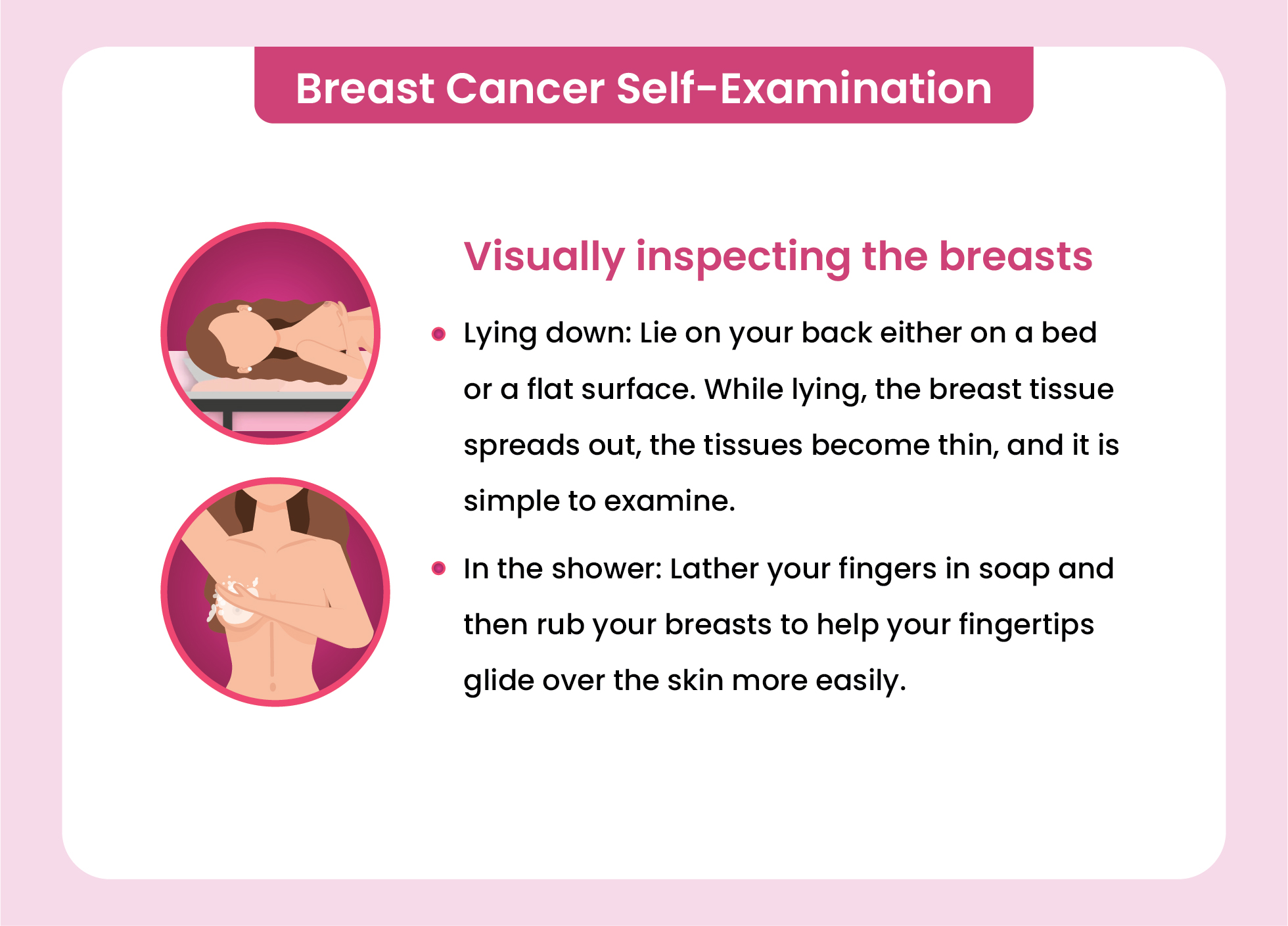
Lying down: Lie on your back either on a bed or a flat surface. While lying, the breast tissue spreads out, the tissues become thin, and it is simple to examine.
In the shower: Lather your fingers with soap and then rub your breasts to help your fingertips glide over the skin more easily.
Utilizing the finger pads: Use the pads of the three middle fingers, not the very tips, to perform the examination.
Utilize various pressure levels: It is recommended to apply varying pressure to feel the breast tissues at various depths. Use mild pressure to feel the tissues closest to the skin, medium pressure to feel a little deeper, and hard pressure to feel the tissues closest to the chest and ribs.
Observe patiently: It is acceptable to carefully inspect the breasts for a few minutes.
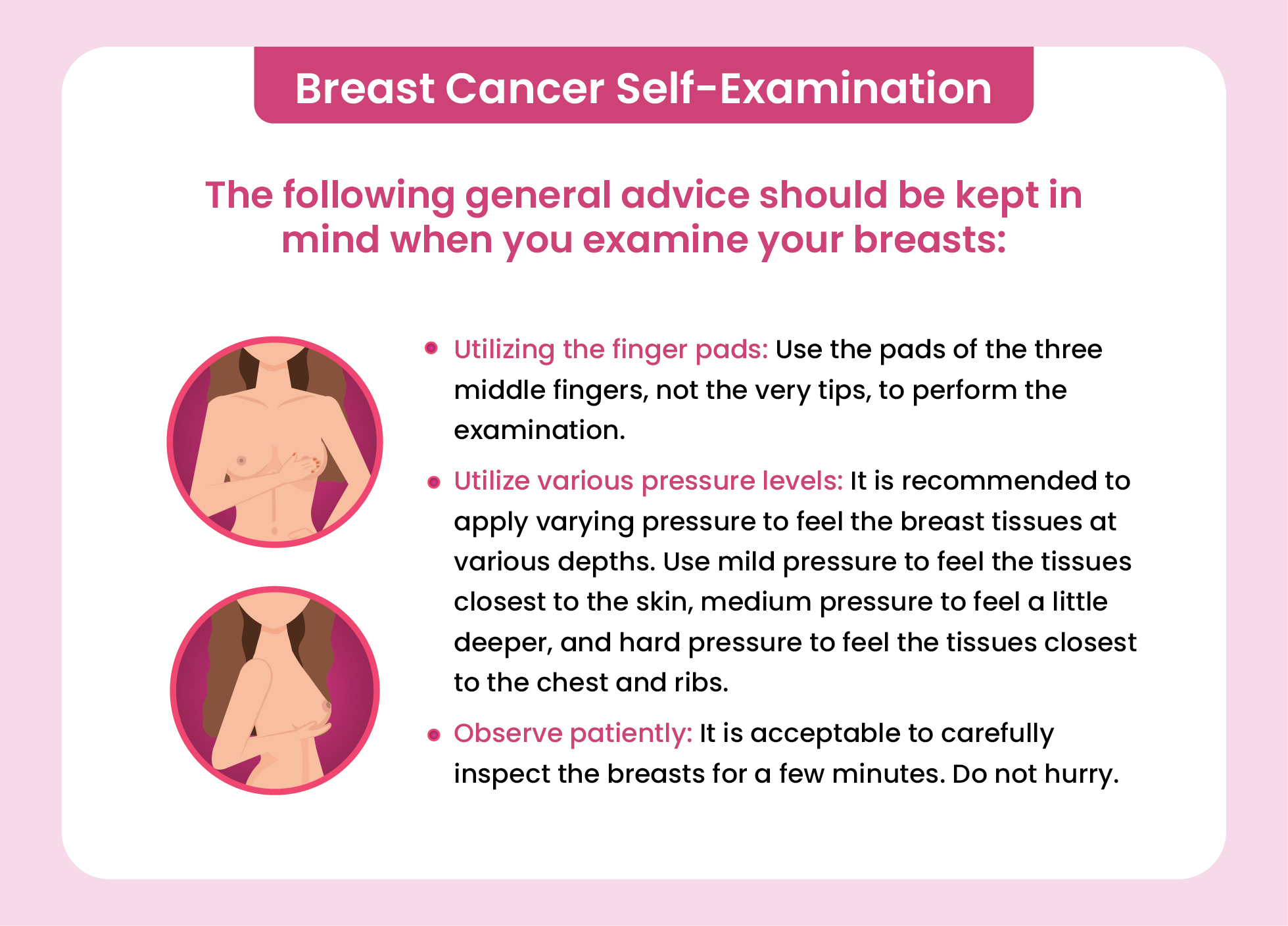
Diagnosis of breast disease is done using THE TRIPLE TEST:

Clinical Examination: Where the breast surgeon examines your breast by physical examination.
Radiological evaluation:
Diagnostic mammogram If you notice any anomaly, such as lumps in your breast, a diagnostic mammography is advised. A diagnostic mammogram is like a comprehensive breast x-ray.
Breast Ultrasound: The sonograms of the breast created by the breast ultrasound equipment are made using sound waves.
Breast MRI: Breast MRI is frequently used to provide precise images of the interior of the breast. It is a kind of body scan that makes use of a magnet and a computer.
Biopsy: Biopsy describes a technique where the suspicious breast tissue or fluid is first removed and then examined . There are various types of biopsies, including open, core, and fine-needle aspiration.
The term "hereditary cancer" refers to cancers that run in families and may be brought on by mutations in particular
genes that you inherited from your parents.These genes may increase your risk of developing cancer. The most common mutations associated with breast cancer,
include BRCA1 and BRCA2, which are inherited in an autosomal dominant manner.
It is crucial to understand that not everyone with altered genes gets cancer.
The BRCA1 and BRCA2 genes are referred to as tumor suppressor genes. These genes support healthy cell growth in breast,
ovarian, and other tissue.
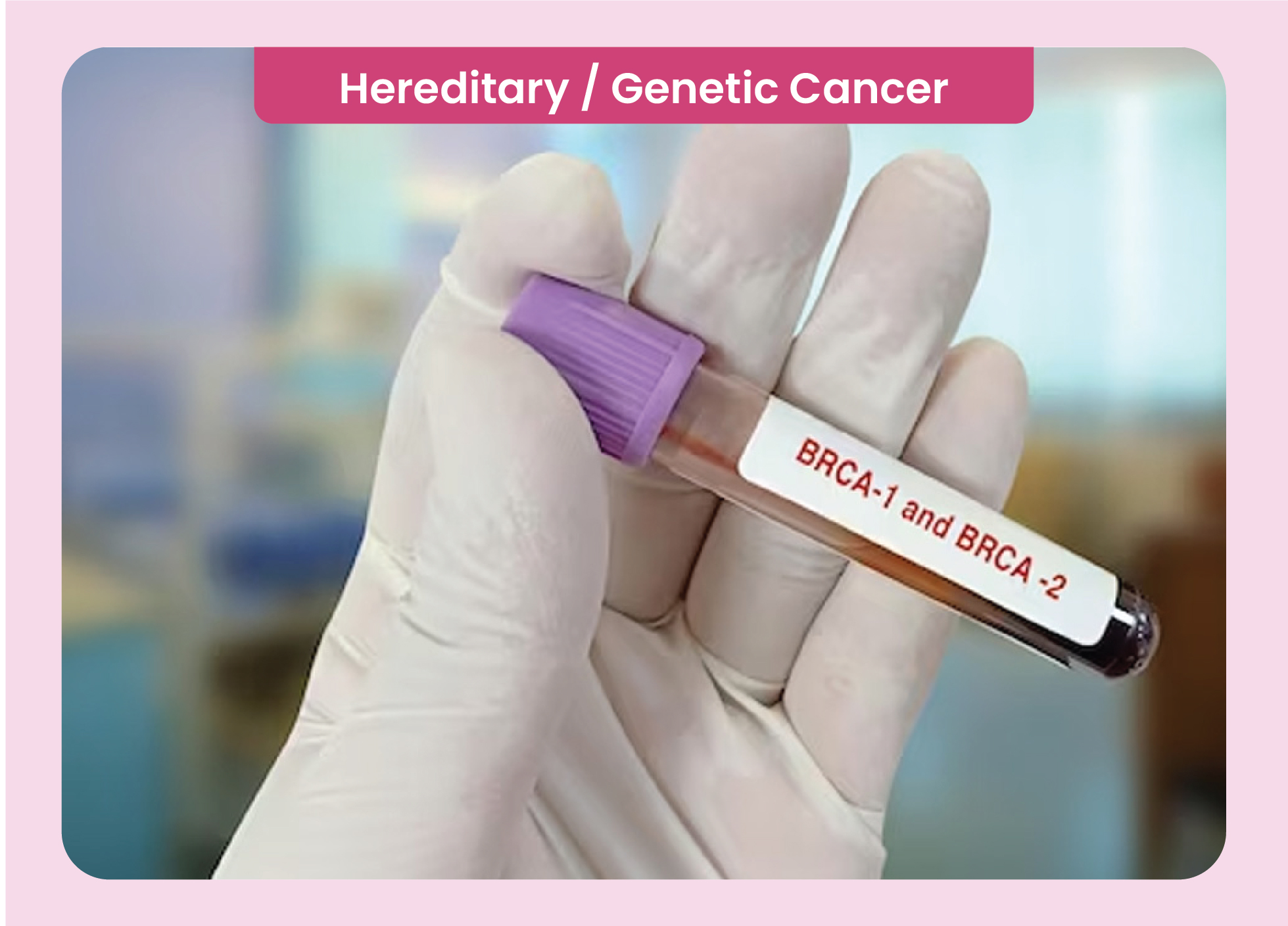
The many breast cancer treatments include:
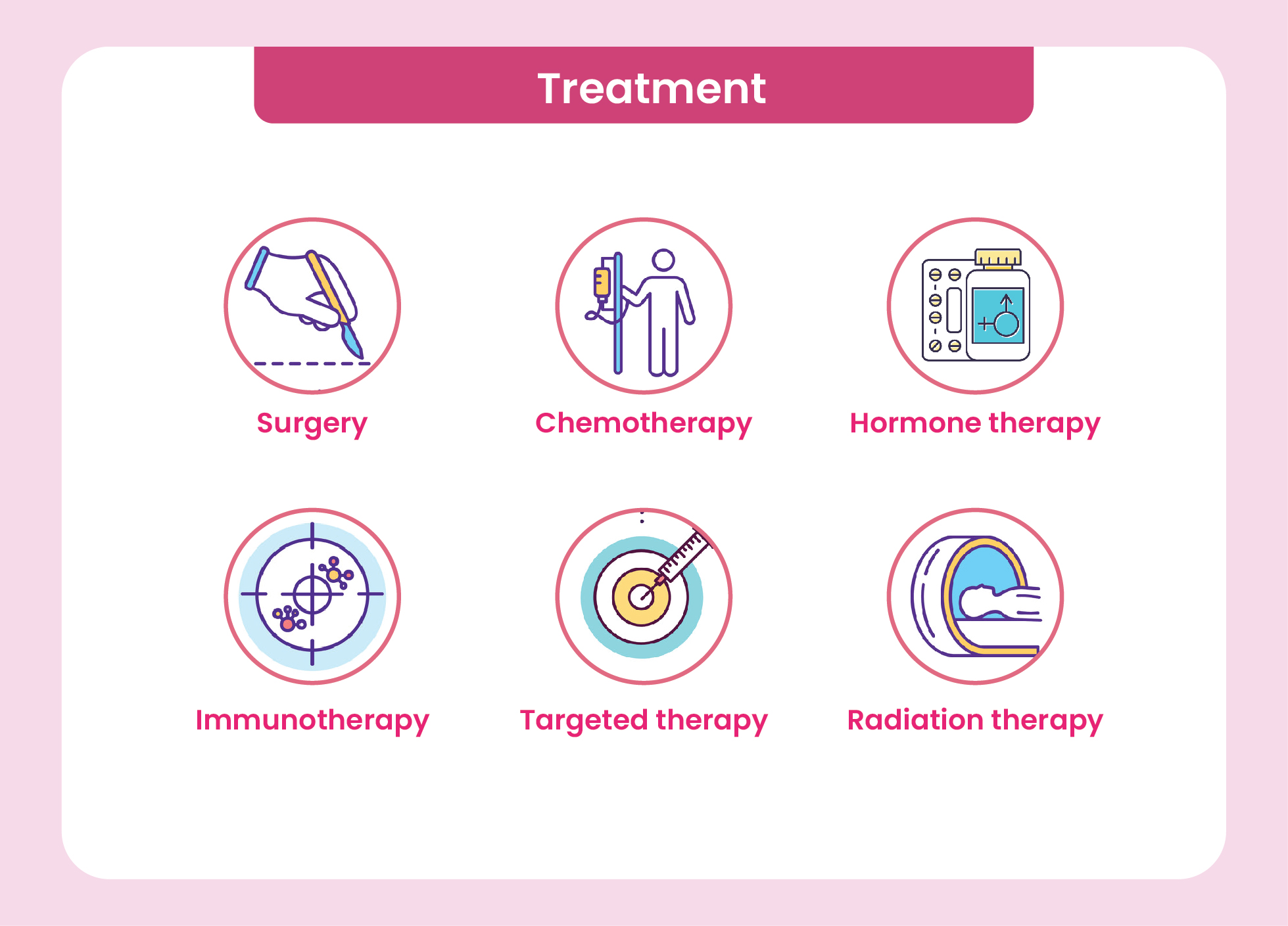
Surgery: Surgery describes a procedure in which the entire mass of malignant tissues is removed and axillary lymph nodes are tested. Chemotherapy can be given before surgery to reduce the size of the tumor if it is large.
Chemotherapy: The process of using drugs to either shrink cancer cells. Chemotherapeutic drugs may be administered intravenously and/or orally.
Hormonal Therapy: The fundamental goal of hormonal therapy is to prevent cancer cells from obtaining the hormones necessary for their proliferation. This is offered to women whose, breast cancer tests positive for Estrogen or Progesterone receptor.
Immunotherapy: Immunotherapy, sometimes referred to as biological therapy, works in conjunction with the immune system of your body to either combat cancer cells or assist manage the negative effects of other cancer treatments.
Targeted therapy: This is offered to women who have HER2 amplification in their breast tumour. The drugs are given intravenously during and after chemotherapy.
Radiation Therapy: High energy x-rays are employed in radiation therapy in order to eliminate cancer cells. This is accomplished with the aid of a device that emits these high-energy rays on the body, with the affected area of the body receiving the majority of the energy. It can be difficult for you to choose the treatment that you will most likely receive. It will be beneficial to get in touch with Dr. Nita Nair, a Breast Cancer Specialist in Mumbai, as she specializes in tailoring treatment regimens for her patients.
What can I do prevent breast-cancer from developing?
For most people, the answer is to live a healthy lifestyle, including not smoking, minimizing alcohol consumption and maintaining an ideal body weight through diet and exercise. The majority of the risk for breast cancer comes from being female, having breasts and aging.
Can men get breast cancer?
Yes, men can develop breast cancer, although it's much less common than in women. Male breast cancer makes up less than 1% of all breast cancer cases. Symptoms in men are similar to those in women, including lumps, nipple changes, or discharge.
Can I exercise during treatment? If so, what kind of exercise should I do, and how often?
Exercise can be a powerful ally in your battle against breast cancer. By incorporating regular physical activity into your treatment plan, you can improve your energy levels, reduce fatigue, and enhance your overall well-being. From boosting your immune system to improving your mood, the benefits of exercise are numerous. Before starting any new workout routine listen to your body's signals. With consistent effort, you can harness the power of exercise to support your recovery and improve your quality of life.
What is the role of hormones in breast cancer?
Hormones can help breast cancer cells grow. Some breast cancer cells have special parts that like to grab onto hormones like estrogen and progesterone. When these hormones stick to the cells, they can make the cancer cells grow bigger.
Does breastfeeding lower the risk of breast cancer?
Yes, breastfeeding can lower the risk of breast cancer. This is because when a woman breastfeeds, her body produces hormones that help protect against breast cancer. The longer a woman breastfeeds, the lower her risk of breast cancer.
Does wearing a bra cause breast cancer?
No, wearing a bra doesn't cause breast cancer. This myth likely started because obesity increases breast cancer risk, and larger-breasted women who may be more likely to wear bras are also more likely to be overweight.
Do all breast lumps mean cancer?
No, most breast lumps are not cancer. In fact, about 80% of lumps biopsied turn out to be benign (non-cancerous). However, any new lump should always be checked by a doctor
What is a mammogram, and why is it important?
A mammogram is an X-ray of the breast that helps doctors detect tumors that are too small to feel. It’s important because regular mammograms can help find breast cancer early, when it is easier to treat. Most women should start getting mammograms at age 40, or earlier if they have risk factors.
What are some misconceptions about breast cancer?
Many misconceptions exist about breast cancer. One common myth is that only women with a family history of breast cancer will develop the disease. In reality, most women diagnosed have no family history. Another misconception is that wearing a bra can cause breast cancer, which has been debunked by scientific research. It’s important to rely on credible sources for accurate information.
Can breast cancer recur after treatment?
Yes, breast cancer can recur after treatment, which is why regular follow-ups are essential. Recurrence can happen in the same breast, the other breast, or in another part of the body. Factors like the type of cancer, stage at diagnosis, and how well it responded to treatment influence the risk of recurrence.
How can I perform a self-exam for breast cancer, and why is it important?
Performing a self-exam involves checking your breasts for any lumps, changes in size, or unusual spots. Stand in front of a mirror, raise your arms, and look for any changes. While self-exams can help you become familiar with your breasts, they are not a replacement for regular mammograms, which can detect issues that may not be noticeable.
How does diet influence breast cancer risk?
Diet plays a role in breast cancer risk. A diet rich in fruits, vegetables, whole grains, and healthy fats can help lower the risk, while excessive consumption of processed foods, red meats, and sugars may increase it. Maintaining a healthy weight is also important, as obesity is linked to a higher risk of breast cancer.